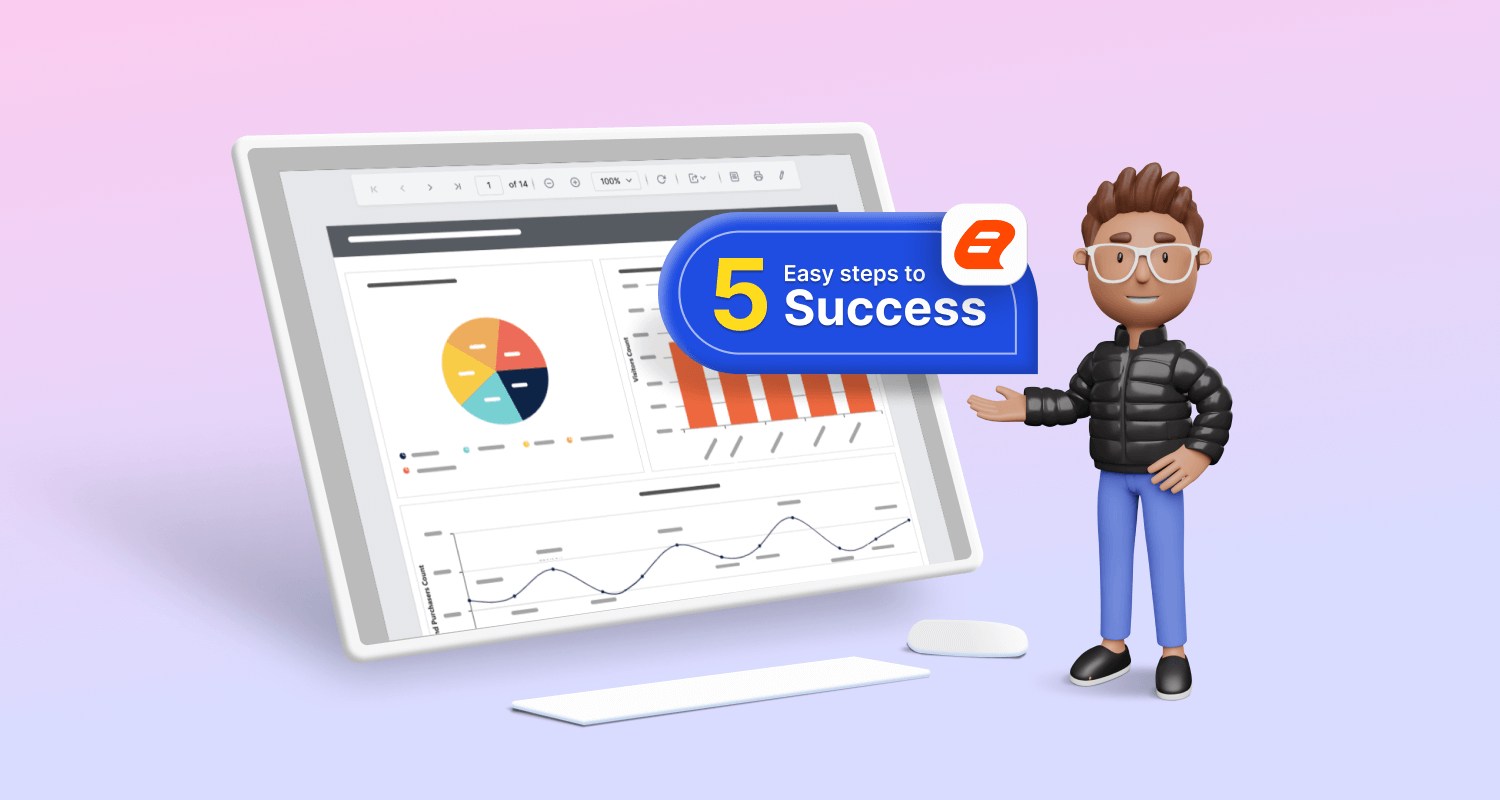Embedded Reporting: 5 Easy Steps to Success
 Bold Reports Team
Bold Reports Team
Embedded reporting is the integration of reporting functionalities directly within business applications. It allows users to access and interact with reports without switching applications, providing a simplified experience that enhances efficiency and user satisfaction. In this blog, we will walk you through the five steps to a successful embedded reporting implementation, whether you are a software developer aiming to enhance your application capabilities or a business owner seeking to better use your data for decision-making.
1. Identify the reporting requirements for your business
Identifying reporting requirements is important to tailor the solution to the organization’s and users’ needs. This involves engaging with stakeholders like department heads and end users to understand the data needs and objectives of the business. Assess existing reports and gather input on desired functionalities to ensure alignment with business goals, provide relevant insights, and address specific challenges.
2. Choose the right embedded reporting tools
You have an enormous selection of embedded reporting tools you can use. It is therefore vital to select one that is compatible with your current applications and customizable to meet your specific reporting needs. Choose a reporting tool that follows business regulations, security standards, and data privacy requirements. The right tool should empower users to create, edit, and analyze reports independently, reducing reliance on developers and IT staff, saving time, and boosting productivity.
3. Integrate the embedded reporting tools into your application
By embedding the reporting tools directly within your application, you eliminate the need for users to switch between different applications. This integration ensures that data insights are not just collected, but also presented in real time within the context of the application. This creates a user-friendly environment where anyone can easily access and interact with reports, promoting a culture of data-driven decision-making.
4. Design user-friendly reports
Designing user-friendly reports ensures that end users can easily explore and comprehend the presented data, thus increasing the value of your business application and aligning with your application’s guiding principles. Maintaining this consistency is key as you proceed with designing more reports. Ensuring visual appeal on various devices and screen sizes becomes crucial for enhancing accessibility. This adaptability accommodates the diverse ways users access and interact with the information, promoting a seamless experience across different platforms.
5. Test and optimize the embedded reporting tools
Testing and optimizing the embedded reporting tools are essential to ensuring the accuracy and reliability of data, identifying and rectifying errors quickly, and optimizing overall application performance. Through testing, you verify whether the application is running properly, examining the responsiveness of embedded reports to different user interactions. This includes assessing whether reports load efficiently and whether visualization components meet requirements. Optimization efforts are directed toward fine-tuning the performance of the embedded reporting tools, addressing any identified issues, and enhancing their efficiency.
Why choose Bold Reports embedded reporting?
Bold Reports keeps your business technologically current by seamlessly integrating with various platforms like ASP.NET Core, Blazor, Angular,React, and JavaScript. This powerful tool empowers you to effortlessly load and publish reports directly from the Report Server, enhancing your reporting processes. The flexibility to create reports using Bold Reports’ services adds a dynamic dimension to your data management capabilities. You can also deploy Bold Reports in various platforms like Kubernetes, Docker, Linux, and Azure App Service.
Bold Reports supports multiple export formats, such as PDF, Excel, CSV, Word, PowerPoint, XML, and HTML, facilitating versatile sharing of reports. By leveraging Bold Reports, you enhance decision-making with intuitive, user-friendly reporting that adapts to your unique business needs. Bold Reports also allows you to choose the database that fits your requirements; you can learn more about this in this blog.
Conclusion
Embedded reporting is a valuable tool for presenting data and insights, revolutionizing the way your organization interacts with information. From identifying your reporting needs to selecting the right tool, each step described in this blog contributes to seamlessly integrating reporting into your workflow. Read the blog “Maximizing Efficiency: 7 Advantages of Embedded Reporting Tools” to learn even more about the benefits of embedded reporting.
Visit our website to learn more about Bold Reports’ embedded reporting tools and reporting solutions.
If you have any questions, please post them in the comments section below. You can also contact us through our contact page, or if you already have an account, you can log in to ask your support question. Bold Reports offers a 15-day freetrial without any credit card information required. We welcome you to start a free trial and experience Bold Reports. Let us know what you think!
Stay tuned to our official X, Facebook, and LinkedIn pages for announcements about upcoming releases.
Subscribe to my newsletter
Read articles from Bold Reports Team directly inside your inbox. Subscribe to the newsletter, and don't miss out.
Written by
